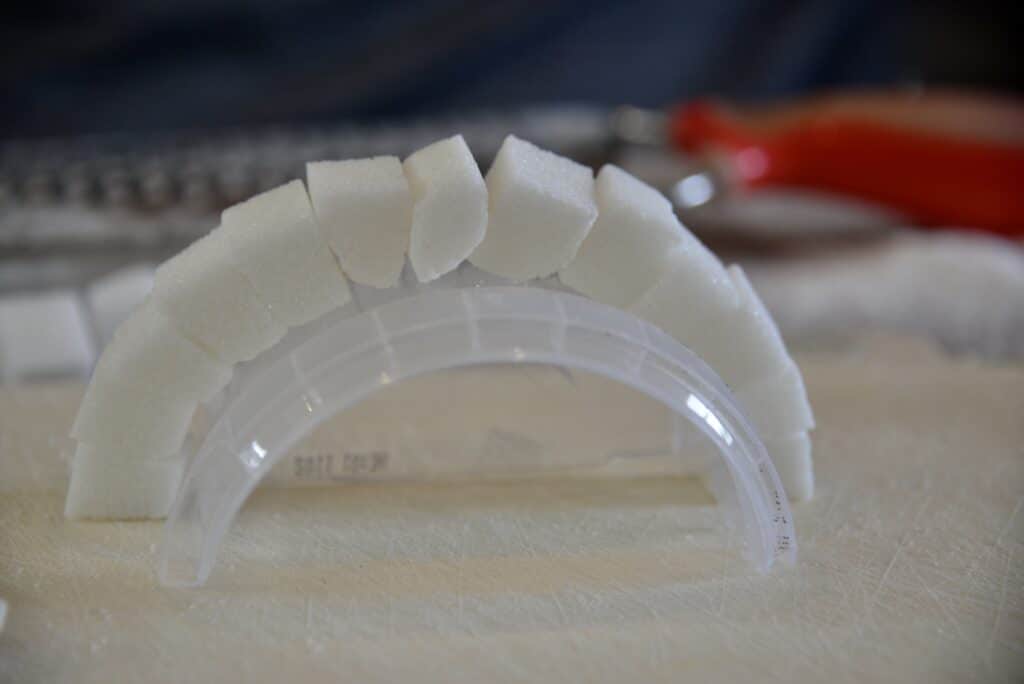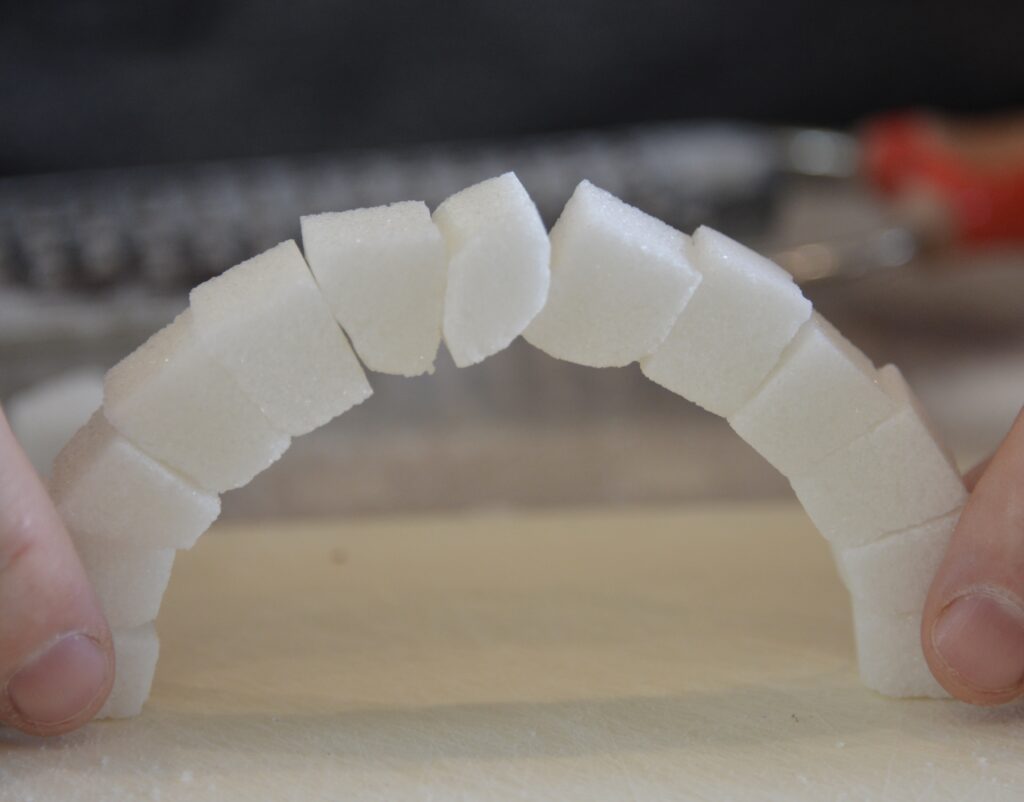The Pont du Gard is the highest of the Roman aqueducts. It was built in the 1st Century AD to transport water to the Roman colony of Nemausus ( now Nimes ) in the South of France. The impressive bridge towers above the Gardon, a feeder river of the Rhone. It’s astonishing to think it was built before the days of the large cranes and machinery we have today.

What is an aqueduct?
Aqueducts transport water from one place to another, usually from a water source to a town or city. The water is carried either through underground tunnels or overground on a bridge like the Pont du Gard. The Pont du Gard is just a small part of the 50km aqueduct which the Romans built to transport water from the start of the Eure to Nemausus.
Aqueducts use gravity to allow water to flow. The slope has to be very gentle so as not to drain the source of the water too quickly but also steep enough to keep the water moving. The average slope of the Pont du Gard is just 25cm per km and includes lots of slopes and detours to keep the water moving.
The Romans were brilliant builders with impressive engineering skills. The Pont du Gard is a fantastic example of Roman ingenuity. It has 3 levels of arches, 6 at the bottom, 11 in the middle and 47 at the top.
Pont du Gard Facts
Pont du Gard took 5 years to build with around 800 workers and construction of the entire aqueduct took between 10 and 15 years.
The stones were sized, numbered and then transported by boat to the site of the bridge where they were stacked in place.
Arches were made using a wooden frame which was removed once the stones were in place.
The bridge was built without mortar to hold the pieces in place apart from the last level.
Pont du Gard is a World Heritage Site.
Today we use pumps to force the water upwards when needed, so aqueducts are built very differently.
Why are arches used in bridges?
As you can see from the Pont du Gard, arch bridges are very strong and long lasting!
Weight on the top of the bridge is pushed outwards, spreading the load along the curve of the arch.
Modern bridges tend to be built from metal or concrete rather than stone, but still use the arch shape for strength.

Roman Arch Engineering Challenge
To continue learning about arches we tried a fun bridge STEM challenge to build an arch with sugar cubes.
It was quite tricky to build, and ours didn’t stand on its own, but with a bit of liquid glucose, I think it would’ve held together much better.
You’ll need
Sugar cubes
Grater
Liquid glucose – optional
Instructions
Look at photos of famous arches and think about the shape of the individual blocks.


Carefully ( ask an adult to help ) use a grater to change the shape of the sugar cubes so they fit together.
Try to build your arch! Ours was not perfect, but lots of fun to make.


More bridge-building STEM challenges
National Geographic Kids has a brilliant arch made with ice cubes that you might also like to try.
Learn about Leonardo da Vinci’s self-supporting bridge and how to build your own!
Try a paper bridge engineering challenge.


Last Updated on November 11, 2022 by Emma Vanstone

Leave a Reply